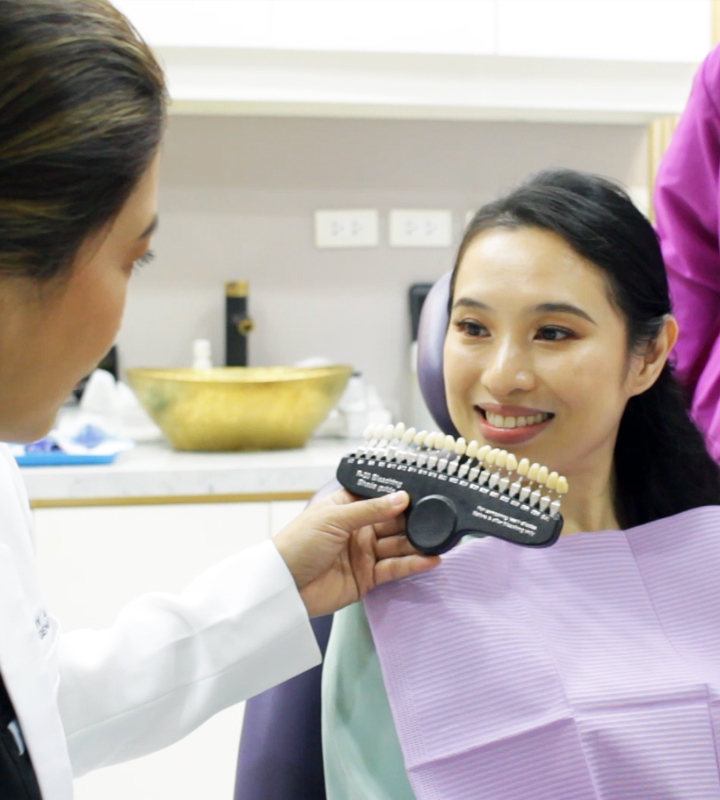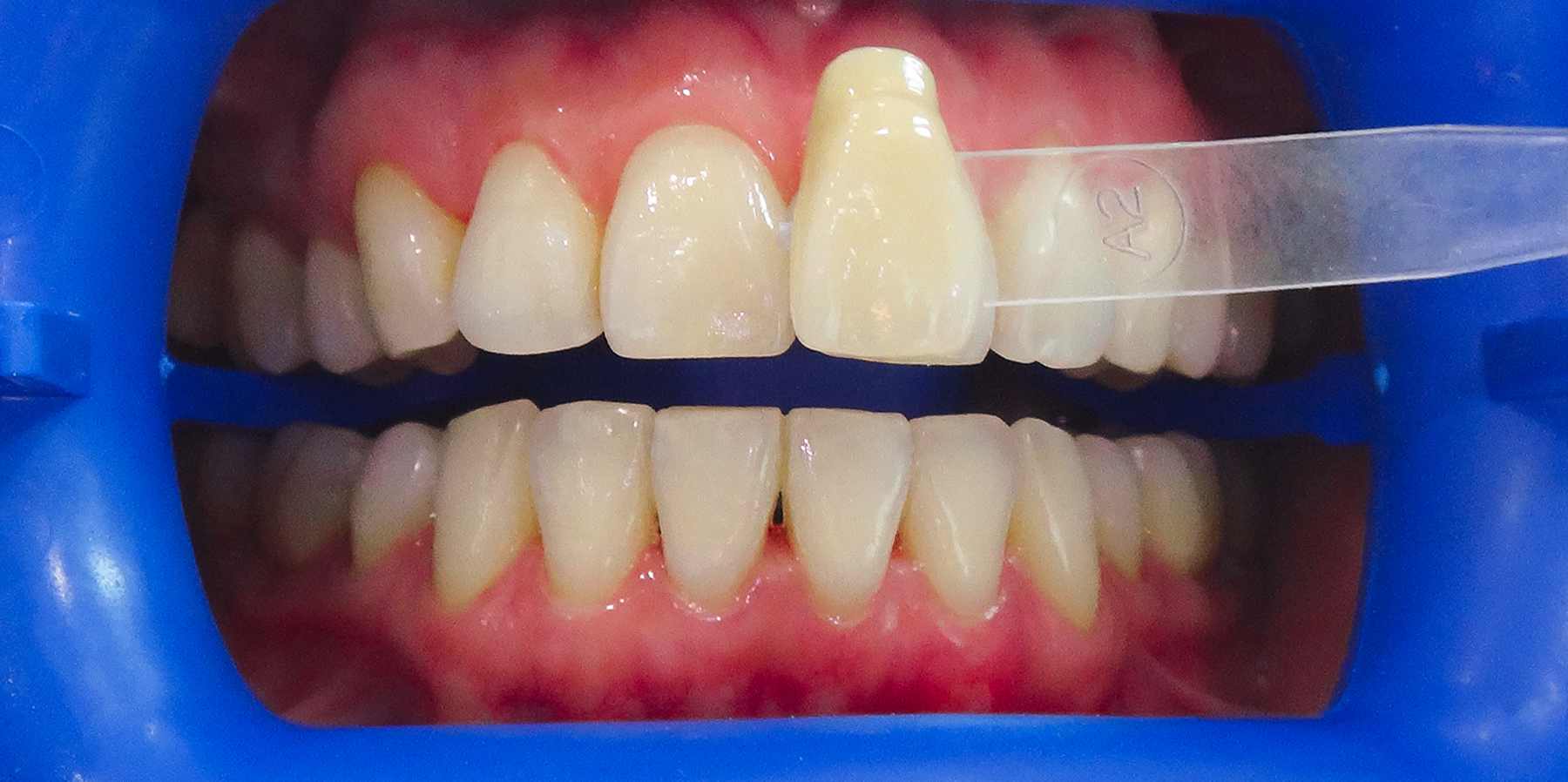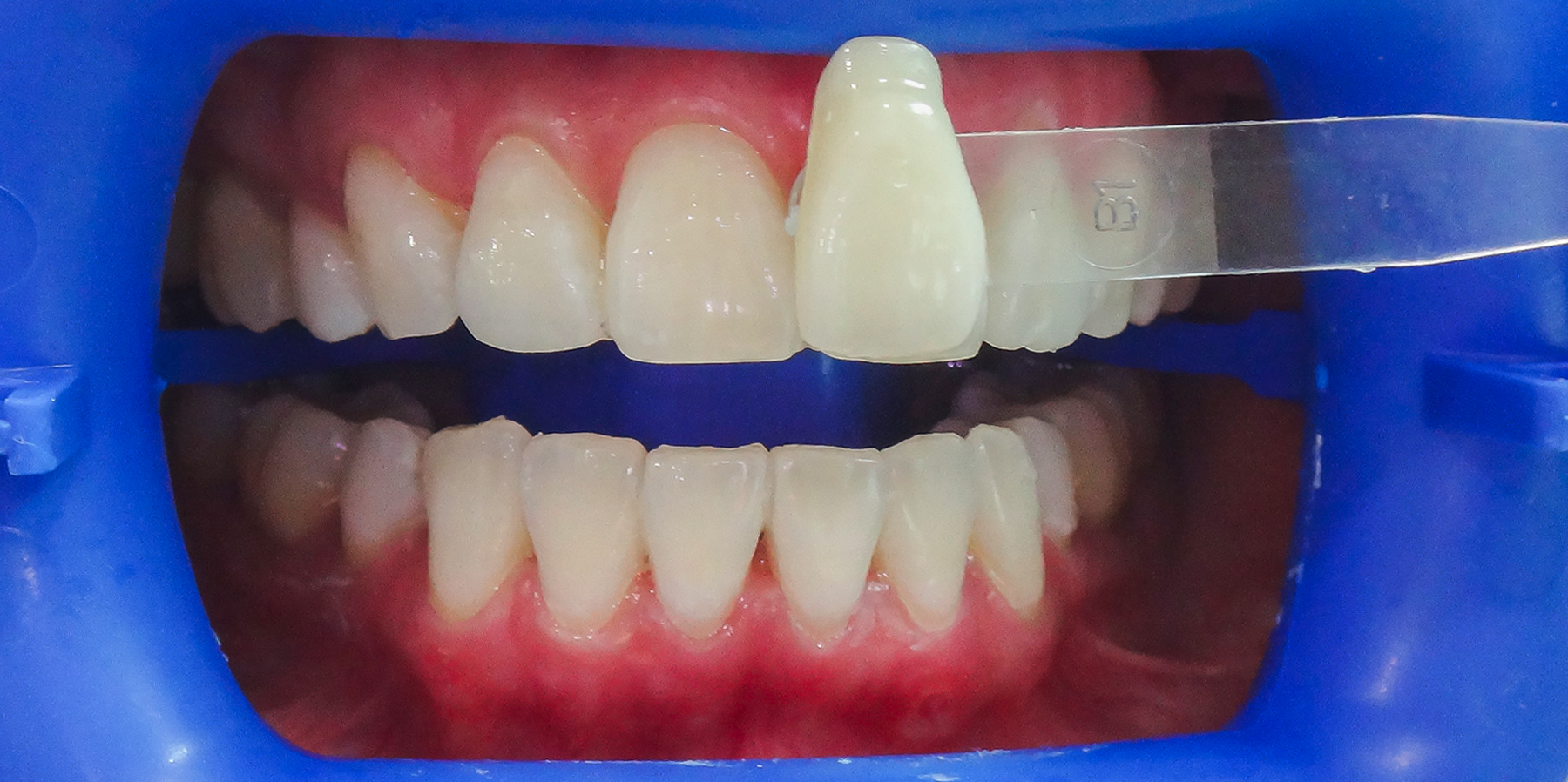Laser Teeth Whitening

Laser Teeth Whitening Procedure
is a fast and efficient way to reduce the discoloration and staining of teeth or simply to provide a patient with whiter, brighter teeth.
We are using the latest technology in teeth whitening making the process faster and has great results. It causes no damage to the teeth and it is a safe and viable option for people who may even have sensitive teeth.
This procedure takes place at the dental practice and uses a light-activated bleaching gel to whiten your teeth. The procedure usually takes approx 1 -2 hours and produces instant whitening results.
Components of teeth whitening:
Commercially available bleaching agents most consist of paste or gel that commonly contain 30-35% hydrogen peroxide. Other additives, such as metallic ion-producing materials or alkalinizing agents that can speed up the oxidation reaction, also are commonly found in these whiten products
Teeth Whitening Procedure/Guidelines:
*Teeth Whitening Before and After Image
- The patient is instructed to report any sensitivity and burning sensations on gingiva that would indicate a leaking barrier and the need to terminate treatment.
- Using a laser machine to accelerate to activate the bleaching material. It takes 15 mins per cycle and as early as 2 cycles, it produces an instant lightening of the shade of the teeth.
- Teeth whitening can be done up to 4 cycles in one visit
- Airflow teeth cleaning is done to remove the plaque, calcular deposit, extrinsic stains, and a clear film covering the outer layer of the tooth, the enamel, to help penetrate the bleaching gel to the tooth to maximize the effect of the treatment
- Vaseline or cocoa butter is applied on a patient’s lips to prevent dryness during the treatment. A mouth retractor is then placed.
- An application of gum barrier is placed to help protect the soft tissues from any inadvertent exposure to bleaching agent.
- The dentist will distribute the bleaching gel on teeth.
- On the completion of the treatment, the dentist rinses the patient’s teeth, removes the gum barrier or the isolation medium, and cautions the patient about post-operative sensitivity. An anti-sensitivity paste and A nonsteroidal analgesic and anti-inflammatory drug may be prescribed if sensitivity is anticipated.
- Patients may experience transient tooth sensitivity between appointments, but no long-term adverse effects of bleaching teeth with otherwise healthy pulps have been reported.
Teeth Whitening Procedure/Guidelines:
*Teeth Whitening Before and After Image
- The patient is instructed to report any sensitivity and burning sensations on gingiva that would indicate a leaking barrier and the need to terminate treatment.
- Using a laser machine to accelerate to activate the bleaching material. It takes 15 mins per cycle and as early as 2 cycles, it produces an instant lightening of the shade of the teeth.
- Teeth whitening can be done up to 4 cycles in one visit
- Airflow teeth cleaning is done to remove the plaque, calcular deposit, extrinsic stains, and a clear film covering the outer layer of the tooth, the enamel, to help penetrate the bleaching gel to the tooth to maximize the effect of the treatment
- Vaseline or cocoa butter is applied on a patient’s lips to prevent dryness during the treatment. A mouth retractor is then placed.
- An application of gum barrier is placed to help protect the soft tissues from any inadvertent exposure to bleaching agent.
- The dentist will distribute the bleaching gel on teeth.
- On the completion of the treatment, the dentist rinses the patient’s teeth, removes the gum barrier or the isolation medium, and cautions the patient about post-operative sensitivity. An anti-sensitivity paste and A nonsteroidal analgesic and anti-inflammatory drug may be prescribed if sensitivity is anticipated.
- Patients may experience transient tooth sensitivity between appointments, but no long-term adverse effects of bleaching teeth with otherwise healthy pulps have been reported.
Teeth Whitening
Homecare:
- Do not smoke for 24-48 hours.
- It’s important not to consume any colorants in the first 24-36 hours following the procedure. Anything that would stain a white shirt, such as red wine, dark colas, coffee, teas, red sauces, soya sauces.
- Sensitivity to cold air and fluids after teeth whitening is common. To prevent this, take 500 mg Ibuprofen or Mefenamic Acid every 6 hours for 24 hours or as needed only.
- Brushing with anti-sensitivity toothpaste like Sensodyne, will help reduce the sensitivity for the next few days.
- Topical creme supplement for the teeth which contains calcium, phosphate, and fluoride is highly recommended to help reduce the sensitivity.
Teeth Whitening
Maintenance:
- Careful diet control avoiding high colorants, such as coffee, red sauces and smoking.
- Meticulous oral hygiene, regular Airflow or oral prophylaxis to remove superficial stains.
- Use of whitening toothpaste as a maintenance.
- Use of home bleaching trays with bleaching gel, to be worn at night.
- Touch up treatments within 6-12 months.
Take Home Whitening Instructions:
While bleaching or whitening your teeth, good oral hygiene measures should be followed (flossing and brushing).
Bead the bleaching gel into your custom tray, using caution not to overload the tray. Insert the tray into your mouth over teeth and gently wipe any excess gel from around the edges of your tray with extra care not to leave any gel on your gums. Irritated gums usually means you have used too much gel in your tray
Wear the tray for 1 hr for the first time; you may use the gel up to 2 hrs, twice daily for 7 days. If the sensitivity is too uncomfortable, stop and reduce time and/or frequency. Usually sensitivity stops after several days
Do not rinse your mouth, since this may dilute the bleaching agent. Do not swallow the whitening gel. Never drink, eat, or smoke while wearing your tray
After completing the bleaching session, remove the tray, brush your teeth and gently clean the tray with a toothbrush. Rinse it completely, and let dry thoroughly before the next session

What You Need To Know
About Laser Teeth Whitening
Laser teeth whitening Treatment results and effects will vary, and the following areas apply directly to the treatment:
- Not Suitable For
Laser Teeth Treatment is not suitable for: Pregnant or Breast-feeding Women; Light-Sensitive Individuals and Patients on Light Sensitive Medications; Melanoma. - Will Not Whiten
Existing Fillings, Crowns, Veneers will not whiten, and may need replacement after Teeth Whitening is completed. - Should Be Treated First
Active Decay, Exposed Dentine and gum disease needs to be treated before proceeding with Whitening, or further damage to the teeth could be caused. - Success Rate Varies
There can be no guarantee to the success of the whitening result as it is dependent on many factors including the existing tone/shade of my teeth, diet, habits and past whitening experience. Already White Teeth won’t whiten as much as darker shades of teeth. - Patches May Show
Patches may become more noticeable. These areas are usually due to decay, gum recession, fluorosis, tetracycline and developmental defects in teeth will not disappear during whitening treatments, and may be more noticeable during the first few days after whitening. Root Surfaces of teeth will not be whitened. - Tooth Sensitivity
At Elevate Dental, we only use non-sensitivity teeth whitening from Europe, but if the patient does feel sensitivity, it will be very mild in the first 24 hours after Teeth Whitening Treatment. The dentist will prescribe toothpaste for sensitivity for patients that have previous sensitivity problems. - Gum/Lip/Cheek Inflammation
When done properly with the use of gingival barrier and lip balm, Laser Teeth Whitening will not harm your Gums and Lips. Sometimes, due to inadvertent exposure of a small area of those tissues to the whitening gel, it will cause burning sensation, though inflammation is usually temporary which will subside in a day. - Relapse
It is natural for the teeth that undergo Teeth Whitening to relapse somewhat in their shading after treatment. This is natural and should be very gradual, but it can be accelerated by exposing the teeth to various staining agents such as Coffee, Tea, Smoking, Red Wines, etc. Using Whitening toothpaste and home whitening kit will maintain the effectiveness of the whitening result.
- GENERAL DENTISTRY
- COSMETIC DENTISTRY
- ORTHODONTICS
- ORAL SURGERY
- PEDIATRIC DENTISTRY
- PROSTHODONTICS
- ENDODONTICS
- PERIODONTICS
- DIGITAL X-RAYS




